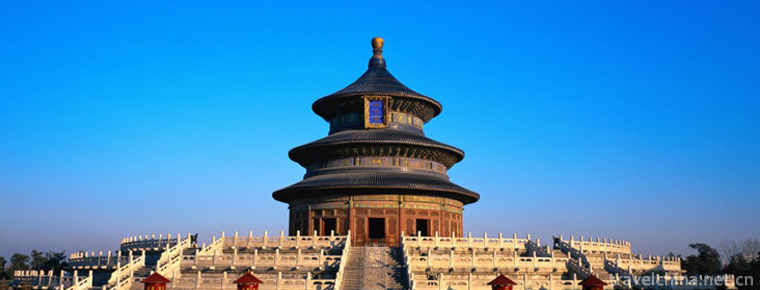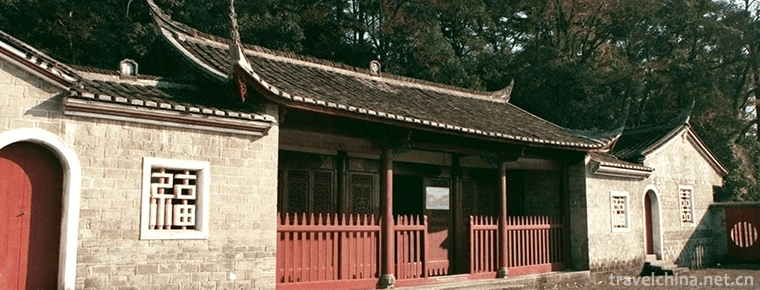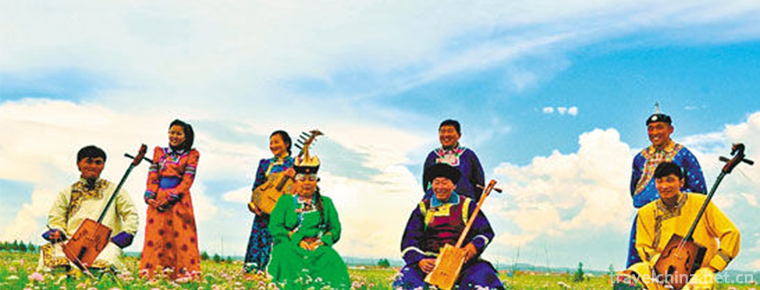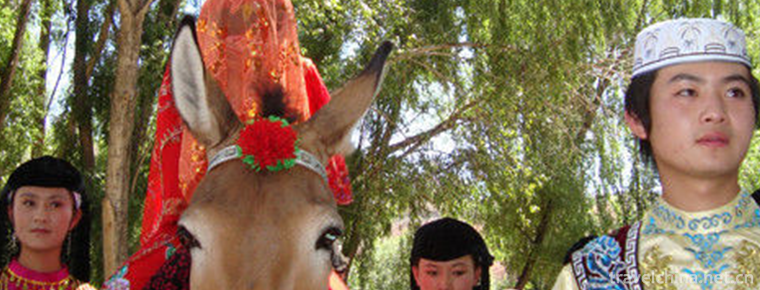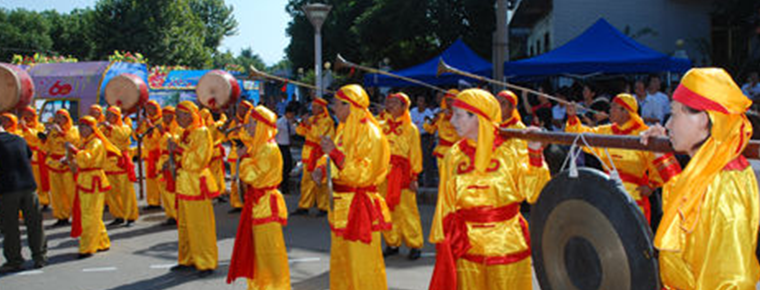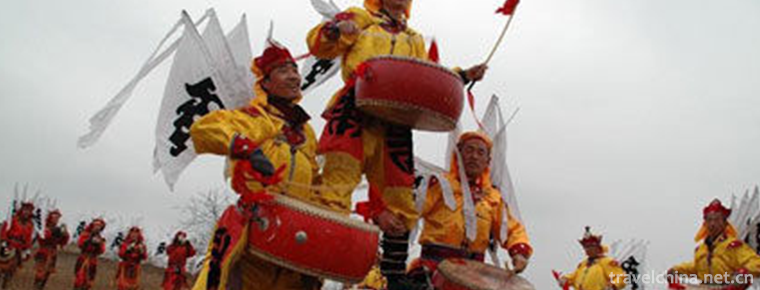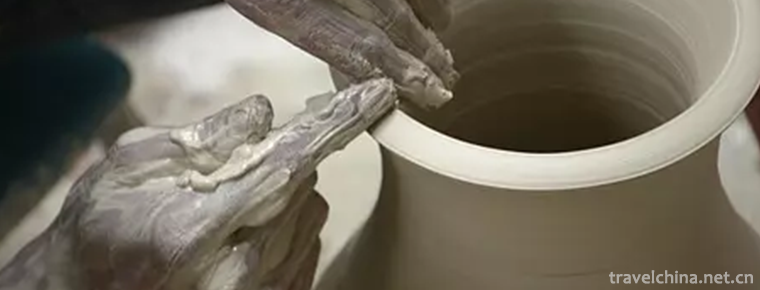Ningbo Zhujin lacquer wood carving
Ningbo Zhujin lacquer wood carving
Ningbo Zhujin lacquer wood carving, a traditional folk art of Ningbo, Zhejiang Province, is one of the national intangible cultural heritage.
Also known as "Golden Lacquer Wood Carving", it is a traditional Chinese craft. Composition features mainly draw on the advantages of Chinese folk paintings and literati landscape flowers and birds, and engraved with poems, inscriptions and seals. Classical, vivid, knife-like, golden and gorgeous, with a strong national style and local characteristics. The main skill is to paste gold lacquer on wood carvings. It centers on Ningbo City, Zhejiang Province, and extends to Cixi, Yuyao, Fenghua, Xiangshan, Ninghai, Zhenhai, Yinzhou and other places.
On May 20, 2006, Ningbo Zhujin lacquer wood carving was approved by the State Council of the People's Republic of China and listed in the first batch of national intangible cultural heritage list, number: _-41.
Historical Origin
The lacquer craft in Ningbo can be traced back to Hemudu culture in the Neolithic Age, while the lacquer wood carving of Zhujin in Ningbo has the same origin as the gold foil decals of the lacquer box carved in the Han Dynasty. In the Tang Dynasty, with the development of wooden architecture, decorative wood carvings with paints and gold stickers appeared. The existing Zhujin wood carvings on the architectural decoration of Ayuwang Temple in Ningbo are similar to those on the Sutra Hall and the Shrine Hall of Zhaoti Temple built by Jianzhen monk and his disciples in the second year of Tang, Qianyuan and Yuan Dynasties.
The Zhujin lacquer wood carving in Ningbo was basically formed in the Tang and Song Dynasties. There are three reasons. First, the climate of Gumingzhou was warm and humid, which was the earliest birthplace of lacquerware and woodcarving; second, the economic prosperity of Mingzhou in Tang and Song Dynasties, and woodcarving and decorations were very popular at that time; third, at that time, the northern part of China was in turmoil, the eastern part of Zhejiang was relatively stable, and with the expansion of navigation industry, Zhu Jin's woodcarving skills were developed. Today, Zhu Jin woodcarving of Tang and Song Dynasties, preserved in Zhengcangyuan, Japan, is closely related to cultural exchanges overseas in Mingzhou at that time.
Since the Ming and Qing Dynasties, Zhu Jin lacquer wood carving has been widely used in folk daily life. Daily furnishings, Buddha statue carving and furniture decoration, especially "bed" and "sedan chair" in wedding and wedding events, are all used in Zhu Jin wood carving, which is both exquisite and prestigious, leading to the theory of "thousand worker bed" and "thousand worker sedan chair". In addition, carved wooden boats, drum pavilions, and pavilions used to meet the gods and participate in the Lantern Festival are also made of Zhujin lacquer wood carvings, which are excellent folk crafts.
In the 1940s, Zhujin woodcarving declined gradually, and only a few folk artists made it. In 1964, Ningbo Arts and Crafts Factory began to produce Zhujin Wood Carving Screen, Box Cabinet and Flower Board Export. In 1974, Ningbo Zhujin Wood Carving Screen "Congratulations on the Birthday of the Immortals" was published. 107 immortals, Luohan, with various forms and gods, juxtaposed with Zhu Jin, were magnificently purchased by Japanese businessmen and displayed in the lobby of Fuji Hotel in Japan. After 1984, the production of Zhu Jin Woodcarving in Ningbo Arts and Crafts Factory gradually stopped.
Cultural characteristics
Content classification
Zhu Jin lacquer wood carving uses camphor wood, basswood, ginkgo and other high-quality wood as raw materials, through relief, round carving, carving and other techniques, carving into various figures, animals and plants and other patterns, using gold decoration, combined with sand gold, grinding gold, milling silver, leaching powder, drawing gold, opening gold and other technological means, sprinkled with mica or mussel shell crushed powder, and then coated with traditional Chinese lacquer, the design is simple and simple. The knife is thick and shining.
Technological features
Subject Content
The subject matter of Zhu Jin's lacquer wood carving is mostly taken from the costume, posture and so-called "Beijing Ban Style" of the opera characters. Stone trees represent mountains, grass represents stones, birds and clouds are the sky, landscapes are the land, boats are the rivers, quite decorative. Such as "warriors without necks, beautiful women without shoulders, lords with bulging bellies, warriors with chest upright", these stylized folk expression techniques make Ningbo's traditional Zhujin lacquer wood carving interesting.
Ningbo Zhu Jinmu carvings are full of composition, content is mostly festive and auspicious events, folk tales, pictures are rich and colorful, forming a unique local style. Screens, cabinets, ancient figures, Buddha statues, animals and colored lights made of Zhujin wood carvings are exported to many countries in Europe, America and Asia. In the temples of Tiantong Temple, Ayuwang Temple and Dou Temple in Ningbo, many Buddha statues also use this technique in their sculpture.
Technology
In wood carving technology, it can be roughly divided into four categories: architectural carving, Zhu Jin Buddha statue carving, daily decorative carving, small appreciation carving.
Ningbo Zhujin lacquer wood carvings are mostly carved with camphor wood, basswood wood, ginkgo wood and other wood carefully into relief, circular carving, carving through, painting and pasting gold, and the use of placer gold, silver milling, gold opening and other technological means, so that the shape of objects is simple and vivid, knife method is thick, golden and colorful, warm red fire.
A simple Zhujin lacquer wood carving small object, but it has to go through 18 processes, most of which are done by hand, many of which can be described as exquisite. Say only the first timber material, take into sheet, need ventilation, shelf shade, natural drying to half a year, to ensure that the carved pattern is not deformed, do not crack. After that, the road has a high technical content, such as blanking, polishing, polishing, matching Zhu, traveling gold base, sticking gold, pasting clay and silver, coloring and so on.
Wood carving and lacquer workers must work together to make Zhujin lacquer wood carving process perfect. Zhujin lacquer wood carving is characterized by lacquer (i.e. lacquer and lacquer art) rather than carving. In many cases, Ningbo woodworkers are also lacquer craftsmen. In the process of Zhujin lacquer wood carving, the carving is not very fine because of the decoration by sticking gold foil and lacquer vermilion, while the repairing, scraping, painting, sticking gold and tracing by lacquer workers are very particular. It is obviously different from other Woodcarving in Ningbo. The characters carved by Zhujin lacquer Woodcarving in Ningbo do not carve faces, and their facial features are outlined with lacquer. It is precisely this kind of craft that makes the Zhujin lacquer wood carving in Ningbo produce magnificent and brilliant effect.
Inheritance and Protection
Inheritance Significance
Traditionally, the skilled and perfect skills, the fascinating expressive ability and the complementary relationship between lacquer workers and sculptors are hard to see today. Due to the lack of inheritance system and social security, Zhujin lacquer wood carving technology will be difficult to continue to exist and develop in its original form, which urgently needs rescue, support, excavation and protection.
Current situation of inheritance
From Sun Yutian in the late Qing Dynasty to the present, Zhu Jin lacquer wood carving has been inherited in all dynasties. The main inheritors are Huang Cailiang in Ninghai, Tong Xiaohai in Ninghai, Chen Gaiyin in Yinzhou, Xie Wuhong in Dongqian Lake, Daixinguo in Ninghai, Zhou Xifang in Fenghua and Ge Anfei in Ninghai. However, with the change of folk customs, Ningbo Zhujin lacquer wood carving is far less important in people's life than before. Nowadays, when people make antique furniture, they still use this technique, but it is far worse than before. The main reason is that they lose their true biography and their level is declining. Producers no longer strictly follow the process, often simplify the production process or use alternatives at will to reduce costs.
Heritage figures
Chen Gaihong, male, born in November 1962, is the representative successor of the first national intangible cultural heritage project, Ningbo Zhujin lacquer wood carving.
protective measures
Ningbo Zhujin Lacquer Wood Carving Museum is located on the west side of Hengxi Reservoir Dam in Yinzhou District of Ningbo City. It is a private museum collecting, displaying, researching and developing Zhujin lacquer wood carving in Ningbo. It was founded by Mr. Chen Gaihong, the representative inheritor of the national intangible cultural heritage of Zhujin lacquer wood carving in Ningbo, who raised nearly ten million yuan by himself. The Museum covers an area of more than 3,800 square meters and has five main exhibition halls, namely, the Flower Caravan Hall, the Historical Materials Hall, the Variety Art Hall and the Statue Hall. It exhibits more than 1500 pieces of Zhujin lacquer wood carving collection and various wood carving art works. Through the establishment of museums, we can solve the danger of "losing heritage" that traditional art is facing at present.
social influence
Honorary recognition
In 2009, the representative work of Zhu Jin's lacquer wood carving "Wangong sedan chair" won the 9th China Folk Arts and Crafts Mountain Flower Award.
social activities
From April 13 to 16, 2018, hosted by Ningbo Municipal People's Government and Zhejiang Cultural Industry Promotion Association, the 2018 China (Ningbo) Cultural Industry Exposition and Fair hosted by Ningbo Municipal Committee of the Communist Party of China, Ningbo Cultural Radio and Television Press and Publishing Bureau and Ningbo Radio and Television Group was held in Ningbo International Exhibition Center. The exhibition is divided into eight pavilions, of which the national arts and crafts exhibition area led by the Municipal Economic and Credit Commission invites the national arts and crafts masters to exhibit with the national intangible cultural heritage such as Zhujin lacquer wood carving, bone wood mosaic, Shili red makeup and other protection projects.
Cultural anecdotes
In Ningbo, there is a popular saying that Zhao Gu, a well-off king in the Southern Song Dynasty, was hunted down by the Jin soldiers and rescued by a Ningbo village girl. After escaping from danger, Zhao Gou promised to take the village aunt into the palace next year, but the secret signal they had appointed leaked. So Zhao Gou ordered, "All women in eastern Zhejiang are king." When they get married, they should wear Phoenix crown Xiamen and ride in dragon and Phoenix sedan chair. If you meet an official on the road, the civilian officer will get off the sedan chair and the military officer will get off the horse. So from the Southern Song Dynasty, the folk custom of Ningbo girls marrying and sitting in sedan chairs became more and more prosperous, and the production of sedan chairs became more and more sophisticated. The Qiangong Bed, as well as the "Wangong sedan chair", is like a small palace with several high-rise castles hanging in front of the bed, carving opera characters and exotic animals tirelessly. The front of the bed contains wardrobes, food cabinets, dressing tables and toilet boxes. It really meets the old Ningbo people's wish of "living in the world, half in the bed".
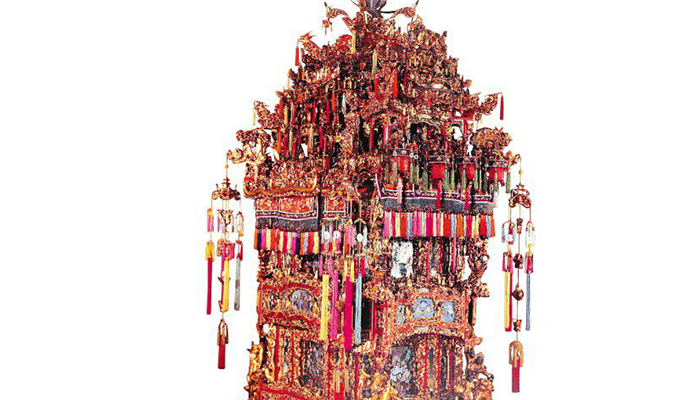
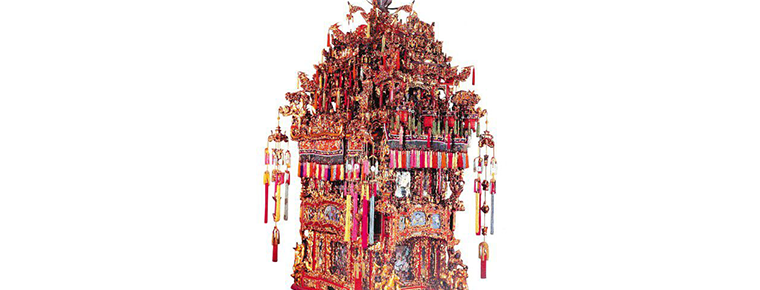
Ningbo Zhujin lacquer wood carving
-
Tiantan Park
No. 1 donglijia, Tiantan, Dongcheng District, Beijing, China
Views: 448 Time 2018-10-02 -
The Bund
The Bund, located on the Huangpu river bank in Huangpu District, Shanghai
Views: 194 Time 2018-10-12 -
Gutian tourist area
It is understood that in 2008, Gutian Tourist Area was rated as a national 4A-level tourist attraction. In 2013, in order to further promote the development of tourism industry and upgrade the brand
Views: 180 Time 2018-12-08 -
Side wall ruins
The local people call it "Genghis Khan Wall", also known as "Jinjie Trench". It is the ancient Great Wall ruins spanning the left banner of Sunite, covering 100 square meters.
Views: 199 Time 2019-01-03 -
Daming Palace Site in Changan City of Tang Dynasty
Daming Palace Site is located in Taihua South Road, Xi'an City, Shaanxi Province. It was destroyed in Binggong at the end of Tang Dynasty.
Views: 182 Time 2019-02-13 -
Mongolian Folk Songs
Mongolian folk songs are mainly divided into two categories: ritual songs and pastoral songs. Mongolian folk songs are famous for their magnificent voices and melodious tunes.
Views: 109 Time 2019-06-04 -
Salar Wedding
Salar wedding ceremony is one of the most important ceremonial activities in Salar people's life etiquette. Salar traditional wedding ceremony is held in the midwinter of each year. From engagement to
Views: 138 Time 2019-06-11 -
Shengzhou Blows
Shengzhou blowing is one of the main components of "gong and drum in eastern Zhejiang". "Zhedong Gong and drum" generally refers to the traditional folk instrumental music in easte
Views: 181 Time 2019-06-14 -
Triple Drum Jump
Dancing three drums is a kind of opera which is popular in counties (cities) such as public security, Shitou, Jiangling and Songzi. It evolved from the funeral board and funeral drum song of sacrifici
Views: 274 Time 2019-06-21 -
Celadon Firing Techniques of Yue Kiln
The firing history of celadon in Yue kiln has gone through the firing process of primitive, primitive and mature ceramics kilns and mature ceramics kilns (i.e. ceramics kilns). In the firing process,
Views: 155 Time 2019-07-16 -
Administrative division of Guangyuan
Guangyuan City has 7 county-level administrative divisions (Municipal District 3, county 4) and 142 township level administrative divisions (Street 7, town 111, township 24). It covers an area of 16310 square kilometers and has a population of 3.11 million. Guangyuan Municipal People's government is located at No.24, north section of Renmin Road, Lizhou district.
Views: 112 Time 2020-12-15 -
Dazhou Sports
By the end of 2019, Dazhou city has a total of 9 stadiums and stadiums, sports lottery revenue of 242 million yuan, and 694 new sports fitness projects for farmers.
Views: 358 Time 2020-12-20
